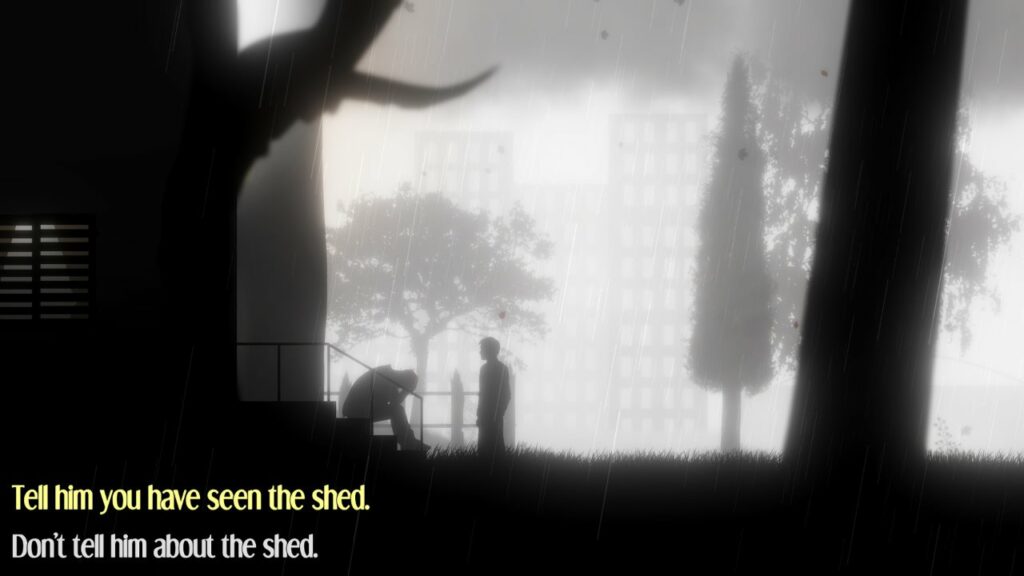
Developer: Filipe F. Thomaz
Publisher: Top Hat Studios
Platform: Switch, PC, PS4
Tested on: Switch
Into A Dream – Review
Slowly but surely, talking about mental health issues is becoming less of a taboo. As an indirect result, we’re seeing more games that are brave enough to tackle these themes, which trickle out from (mostly) indie studios. These games can help people suffering from these issues in dealing with them, as well as aid their loved ones in understanding what someone is dealing with. Even so, it’s always tricky to turn a heavy theme like depression into an easily palatable video game, and the end result is often hit or miss. Into A Dream, the subject of today’s review attempts to do so. Read on to find out whether developer Filipe F. Thomasz’s debut title successfully translates depression into a game or if this title should be avoided at all costs.
Story
The story presented in Into A Dream is arguably the title’s main feature, mostly because of the themes it deals with. Players take on the role of John, who is depicted as a featureless silhouette, as he partakes in an experimental procedure where he is literally placed in what appears to be someone else’s dream. The dream John is placed in belongs to a man named Luke, who is suffering from depression. The experimental Inception-like technology aims to explore the subconscious of depressed patients, in order to help with their treatment. The first few stages do a decent job of explaining the setting as the scientists that are monitoring John are heard giving instructions and explaining the procedure. As you progress through Into A Dream, however, John runs into a variety of increasingly impactful situations that reveal the true nature of the situation he is in. We won’t delve into spoiler territory, but the game deals with mental health issues in a way that is both confrontational and offers insight.
The game takes its time with each segment, and while this may feel slow to some, this change of pace increases the impact of each chapter of the story. On their own, the scenes feel quite scattered and unconnected but if you step back and see how everything fits together, you’ll start to realize there is a bigger picture in play here. Overall, it’s a well-written experience that is somewhat hampered by the fact that the text suffers from a few grammatical issues, which can feel jarring. We should also point out that while the overall story works as a whole, the game does suffer from pacing issues and it isn’t until you complete it that you fully understand what’s going on. This is one of the rare cases where a second playthrough really helps in appreciating what makes Into A Dream special, but we’re not sure if this is a story people will actively want to revisit once they’ve played it through for the first time.
Graphics
From a visual point of view, Into A Dream is absolutely gorgeous. Characters are deliberately presented as silhouettes, which makes sense as faces are among the harder things to remember from dreams. These silhouettes are then placed in a variety of frankly gorgeous environments. The expertly chosen color palettes evoke a wide range of emotions and emphasize the surreal situations that John finds himself in. There is a huge variety in these environments, ranging from a forest to a church, to a hospital and everything in between. That’s not to say everything is perfect visually. Character movement feels a bit janky, especially when it comes to John himself, whose walking animation looks awkward and unnatural.
Sound
The atmospheric soundtrack is a delight and really draws you into the surreal and alien world of the game. It’s easily one of the game’s highlights. Juxtaposed against this, however, is the awful and uninspired voice acting. The characters seem disinterested in their own dialogue and the game would have actually been better had the voice acting not been included, with the game instead relying on on-screen text.
Gameplay
Although Into A Dream is technically a side-scrolling adventure game, but there is a jarring lack of actual gameplay present here. This is in part due to the title being a narrative-driven experience. The central theme also doesn’t really lend itself to an action-packed adventure. We wouldn’t go as far as saying that perhaps the developers could have delivered this story in a different way, as the interactive elements do help here in becoming connected to the struggles that John is dealing with. This would have been more difficult to achieve by delivering Into A Dream as a visual novel or an animated feature. This is also developer Filipe F. Thomaz’s first release, which makes the impact the title has all the more impressive, even if it doesn’t make much of an impact gameplay-wise. The gameplay mostly centers around dialogues between John and the various characters he encounters, with John having to make dialogue choices in order to progress the story. Luke takes up a huge role here, with John having to reassure Luke that everything is going to be alright.
The ultimate aim here is to help Luke deal with his depression, and to do so, John has to jump back and forth between Luke’s scattered memories, talk to his family and friends and piece together various events from Luke’s life. Each event sees John tasked with gathering information and performing small actions in order to “clear” a memory and move on to the next. While there are some puzzle elements present here, these are mostly subtle and can be as simple as having to flick a light switch on or off in order to complete a puzzle. There are also some very light platforming elements present, where you’ll need to use the environment in order to make your way through the levels. One of the game’s earliest parts, for example, sees you push a block into a river, so that you can use it as a platform to get across. Controls here are a bit stilted and feel inaccurate, but are easy to get used to, especially as the game never over-complicates the required actions. For the most part, however, you’re simply undergoing the narrative, for lack of a better word and interactivity is limited to the most necessary actions. What is present, however, does help to ground John in reality and makes for a more impactful story.
Conclusion
If anything, Into A Dream provides a valiant and interesting look into the mind of someone dealing with depression, although the overall delivery leaves a lot to be desired. The game defines a mixed bag, as for every good thing about the game, there is also an imperfection. Whether it’s the fantastic soundtrack that contrasts with the lackluster voice action, the gorgeous visuals juxtaposed against the janky animations or simply the story pacing issues, this is a game that doesn’t truly live up to its potential, despite still being worth a look at.
Into A Dream - Review,1 Comment
Leave a Reply
You must be logged in to post a comment.









[…] public consciousness. The majority of games that deal with mental health as a primary theme, like Into A Dream or Stilstand, try to make the subject matter palatable but there are the occasional titles that are […]